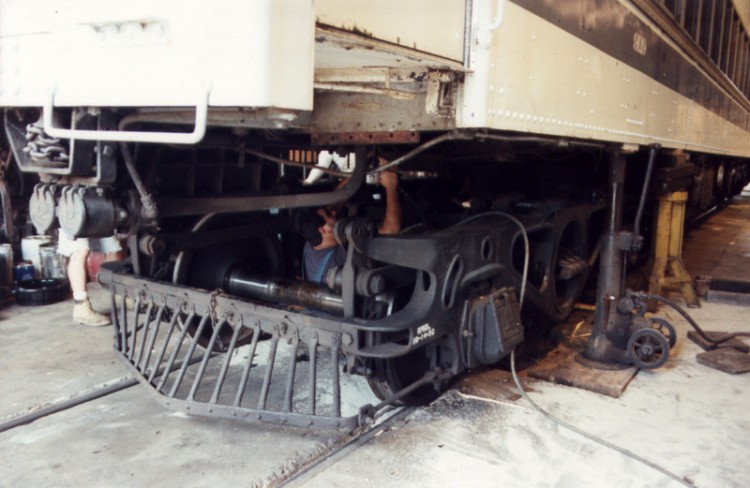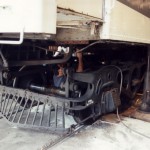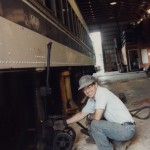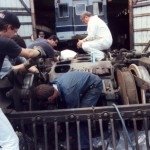
Railcars Receive Rapid Repairs
By admin, December 8, 1997
Historic railcars repaired in short order allow volunteer group to run public excusions.
In late 1997 I led a project for a volunteer group to work on seven historic railroad passenger cars so they could be used on planned public excursions.
The historic railcars, built by Bethlehem Shipbuilding in 1929 and 1930, still retained electric propulsion motors, although we towed them with diesel locomotives. Federal Railway Administration inspectors determined we could no longer use the cars with motors in place. Two motors, each weighing about 7000 pounds, had to be removed from under each car before they could be used the next spring.
I discussed the project with several contractors. Even at their best discounted rates we did not have funds to pay for their services. I therefore proposed we do the work ourselves with volunteers, and use proceeds from scrap materials for the museum’s benefit.
Using a borrowed shop building and air jacks, we raised one end of each car and rolled the truck (wheel and axle assembly) with motors from underneath. As we stripped parts in preparation, a local towing company dispatched a truck to do the heavy lifting part, which took little time. By using tow trucks as needed instead of a rented crane, we saved a substantial amount on equipment rental and operator wages.
Once all the cars were stripped of motors, we hired a larger tow truck for a couple hours to load scrap into bathtub dump trailers. We sent about 100,000 pounds of steel and copper motor scrap off to China, yielding a substantial income for the museum. We replaced the steps on the cars, and they were used on passenger excursions in 1998.
Tags
Archives
- July 2023
- January 2023
- December 2022
- October 2022
- September 2022
- August 2022
- July 2022
- August 2020
- April 2018
- September 2017
- July 2017
- January 2017
- December 2016
- September 2016
- January 2016
- October 2015
- August 2015
- July 2015
- April 2015
- March 2015
- January 2015
- December 2014
- July 2014
- May 2013
- June 2012
- May 2012
- November 2011
- March 2011
- December 2010
- February 2010
- August 2009
- June 2009
- December 2007
- June 2007
- September 2006
- April 2006
- May 2005
- December 2002
- June 2002
- December 2001
- August 2001
- June 2001
- November 2000
- December 1998
- October 1998
- December 1997
- October 1996
- April 1995
- April 1994
- December 1993



